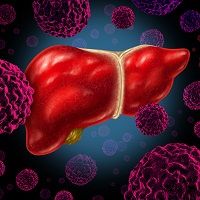Article
Composite Calculator May Improve Screening Accuracy for Hepatocellular Carcinoma
Author(s):
A screening tool that uses a common marker for liver malignancy or inflammation in combination with other values holds promise for improved screening accuracy in hepatocellular carcinoma.

A screening tool that uses a common marker for liver malignancy or inflammation in combination with other values holds promise for improved screening accuracy in hepatocellular carcinoma (HCC). James Trotter, MD, Medical Director of Liver Transplantation at Baylor University Medical Center, Dallas, presented a promising composite HCC screening model, drawn from analysis of a large HCC patient dataset, on November 10, 2014 at The Liver Meeting in Boston, MA.
Trotter presented findings from a “megadata” analysis that pooled results from more than 10,000 patients with hepatitis C virus (HCV) and cirrhosis from 1998-2005. Analysis was done by electronic medical record review of a largely male service veteran population. The study, in which Trotter did not participate, was authored by Hashem El-Serag, MD, Professor of Medicine and Chief of Gastroenterology, Baylor University Medical Center, and colleagues.
Serum alpha fetoprotein (AFP) is present primarily during fetal development, but also is elevated during other times of hepatic proliferation, as during regeneration from injury or hepatic inflammation, or during malignancy. It has traditionally been used as a marker for HCC; it is easy to obtain, but not very accurate, with reports of false negative rates as high as 30%. Further, because AFP elevation can occur in many proliferative states, elevation can also be associated with hepatitis or cirrhosis in the absence of HCC.
These factors led investigators to search for a model that would provide a more accurate marker for HCC by incorporating a combination of values. In constructing the model, investigators took into consideration several patient factors that are associated with increased risk of HCC. These include advanced age, longer duration of liver disease, and greater disease severity.
Further, including liver enzyme values and information about clotting capacity may improve screening yield. Investigators considered levels of alanine aminotransferase (ALT), aspartate aminotransferase (AST), alkaline phosphatase, bilirubin, and albumin. They also tracked serum platelet values.
After multivariate analysis, the greatest gain in predictive value came from ALT values, platelet count, and age. ALT elevation is not associated with HCC, so AFP elevation in conjunction with ALT elevation makes HCC less likely. Lower platelet count increased the risk of HCC when AFP is elevated, probably because the increased portal hypertension associated with more severe liver disease impacts platelet production. Conversely, increased age was associated with increased risk for HCC in the context of AFP elevation.
Among the study implications, Trotter said, would be the development of a simple calculator that could be used as a mobile app or available online. Especially in cost-constrained systems, the calculator could help with risk stratification to assess the need to continue to scan or biopsy.
Trotter said limitations of the study include the fact that this VA population is not representative of the general population, and has a known higher risk of HCC; further, records were drawn almost exclusively from male patients. Model validity will need to be tested against a more representative population. Still, he said, the study has important implications. More and more predictive models are being made available for point of care use, and the tool represents an important step toward more accurate screening in the HCV population.





